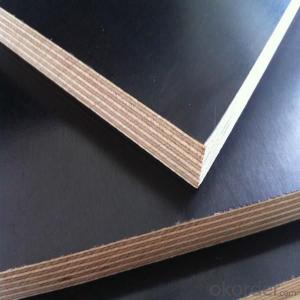When you’re gearing up for a home project, one of the most important decisions you’ll make is choosing the right plywood. It’s a versatile material that can be used for a multitude of applications, from furniture making to home renovations. But with so many types of plywood available, how do you know which one is the best fit for your needs? Let’s dive into the world of plywood and explore the factors that can help you make an informed decision.
The Plywood Family
Plywood comes in various types, each with its own set of characteristics and ideal uses. Understanding the differences between them is crucial to selecting the right one for your project. Here are some common types you might encounter:
– Baltic Birch Plywood: Known for its high-quality birch layers and smooth surface, it’s perfect for furniture and cabinetry.
– Marine Plywood: As the name suggests, it’s designed for moisture resistance, making it ideal for boat building and outdoor projects.
– Softwood Plywood: Made from coniferous trees, it’s affordable and commonly used for construction and general woodworking.
– Hardwood Plywood: Offers a natural wood veneer finish, suitable for projects where aesthetics are important.
– MDF (Medium Density Fiberboard): Not technically plywood, but often compared due to its panel-like form. It’s denser and more uniform than plywood, but less durable.
Consider Your Project’s Needs
Before you rush to the store, consider what your project requires. Is it going to be exposed to moisture? Will it need to support heavy loads? Answering these questions will guide you towards the right type of plywood.
– Moisture Resistance: If your project involves water or is outdoors, marine plywood or other moisture-resistant options should be your go-to.
– Load Bearing: For structural elements, look for plywood with a high-quality grade that can handle the stress.
– Aesthetic Appeal: If your project will be on display, hardwood plywood or Baltic birch might be the way to go for their attractive finishes.
The Art of Plywood Grading
Plywood is graded based on the quality of its face veneers and the presence of defects. The grading system can be a bit confusing, but it’s essential to know what you’re getting into.
– A-grade: The best veneer quality, with few to no defects, making it suitable for a finished surface.
– B-grade: Slightly more defects, still good for finished surfaces, but may require some touch-ups.
– C-grade and below: Not recommended for visible surfaces, as they have more visible defects and may be used for structural purposes only.
Plywood Thickness and Size Options
The thickness and size of the plywood sheet can also impact your project. Thicker plywood can support more weight, while larger sheets may be more convenient for wide surfaces.
– Common Thicknesses: Range from 1/8 inch to 3/4 inch, with 1/2 inch and 3/4 inch being the most common for home projects.
– Sheet Sizes: Standard sizes are 4X8 feet, but you can also find 5X5 feet or even larger for specific needs.
Environmental Impact and Sustainability
In today’s eco-conscious world, you might also want to consider the environmental impact of the plywood you choose. Some plywood is made from sustainably harvested wood and comes with certifications like FSC (Forest Stewardship Council).
– FSC Certification: Ensures that the wood comes from responsibly managed forests.
– Sustainably Harvested: Supports the health of our planet by using resources wisely.
Budget Considerations
Your budget is a significant factor in choosing plywood. While higher-quality plywood may cost more upfront, it can save you money in the long run by requiring less maintenance and replacement.
– Cost vs. Quality: Weigh the initial cost against the durability and longevity of the plywood.
– Economical Options: Softwood plywood and MDF are often more affordable but may not offer the same performance as hardwood or Baltic birch plywood.
DIY Tips and Tricks
When working with plywood, there are a few tips and tricks to keep in mind to ensure your project’s success:
– Handling: Plywood can be heavy and awkward to handle. Use proper lifting techniques and consider using a helper or a hand truck.
– Cutting: Use sharp tools and take your time to make clean, precise cuts.
– Sanding: Smooth out surfaces with sandpaper, starting with a coarser grit and moving to a finer grit for a polished finish.
– Finishing: Apply the appropriate finish for the plywood type and your project’s requirements, whether it’s paint, stain, or a clear coat.
Making the Right Choice
Choosing the right plywood for your home projects is a combination of understanding the material, considering your project’s specific needs, and balancing quality with cost. By taking the time to research and compare your options, you can ensure that your project not only looks great but also stands the test of time.
Remember, the right plywood can make all the difference in the quality and longevity of your home projects. So, take your time, ask for advice, and don’t be afraid to make a decision that best suits your needs and preferences. After all, your home is an extension of who you are, and your projects should reflect that.

